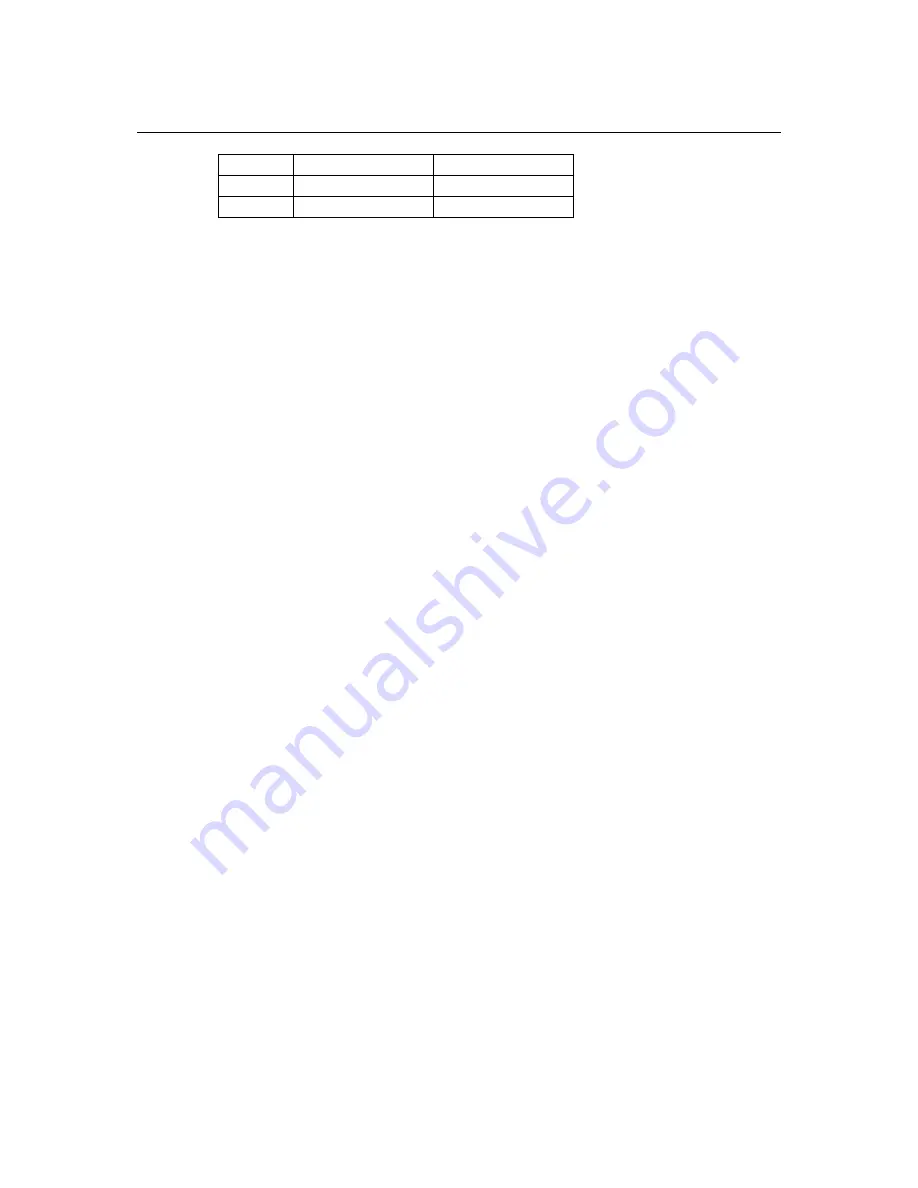
UC-7400-CE User’s Manual
Getting Started
2-3
Default IP Address
Netmask
LAN 1
192.168.3.127 255.255.255.0
LAN 2
192.168.4.127 255.255.255.0
For most applications, you will need to change the IP addresses and netmasks to accommodate the
network environment. Use the
netconfig
utility to update the IP addresses and netmasks. Type
netconfig -h
to list the help items for this utility.
\> netconfig -h
Usage: netconfig –n <“LAN1” or “LAN2”> [-m <netmask>] [-d <DNS server>] [-g <gateway>]
[-i <IP address>]
For example, if your development workstation has a LAN port at 192.168.1.x and the Domain
Name Server (DNS) is at 192.168.2.6, execute the following command:
\> netconfig –n LAN1 –i 192.168.1.5 –m 255.255.255.0 –g 192.168.1.254 –d 192.168.2.6
Use the
netconfig
command to view the new settings.
\> netconfig
LAN1 Interface Configuration:
IP Address: 192.168.1.5
SubNet Mask: 255.255.255.0
Gateway:
192.168.1.254
DNS: 192.168.2.6
LAN2 Interface Configuration:
IP Address: 192.168.4.127
SubNet Mask: 255.255.255.0
Gateway:
DNS:
Operating the UC-7400-CE by Telnet
Before operating your UC-7400-CE computer using the Telnet client, we suggest that you change
the network settings of the computer (see the previous section) so that at least one of the two
network ports is on the same LAN as your development workstation.
Use a cross-over Ethernet cable to connect your development workstation directly to the target
computer, or a straight-through Ethernet cable to connect the computer to a LAN hub or switch.
Next, use a Telnet client in your development workstation to connect to the Telnet console utility
of the target computer. After the connection has been established, type the login name and
password as requested to log on to the computer.
Login: admin
Password: admin
After logging in through the console port or a Telnet client, you will see a list of busybox
commands available to operate the computer. Use
HELP
to display all of the commands, or type
HELP [command name]
to display extended help for the selected command. The
DATE
and
TIME
commands are used to manage the system time of the computer. Others commands, such as
DIR
and
MKDI
R
, are used for file management. For example, to inspect the file structure of the
root directory, type
DIR
\> dir /b
NORFlash
My Documents
Program Files
Temp
Windows






























